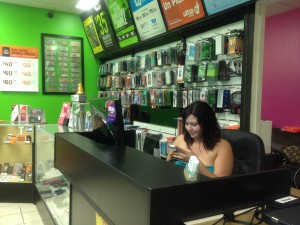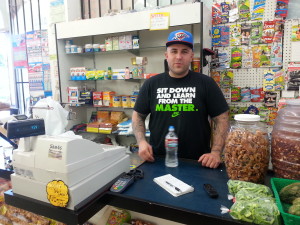
With lifestyles that usually incorporate healthy choices, it’s no surprise Los Angeles has made the juicing trend a way of life. I had the privilege of interviewing Lucy Wagner, one of the original employees of The Juice, a cold pressed organic juice bar in Atwater, Los Angeles.
Lucy Wagner has been working at The Juice since day one and she has been through the business changes and expansion of the company for over 2 years. She shared with me her understanding on the day to day challenges the founders of The Juice has faced and her first hand perspective on business development.
What makes The Juice different from other stores is that they cold press all their juices. Cold pressing it’s a newer process in which the fruits vegetables are first crushed and then pressed in a huge hydraulic press (with a pressure equal to 5 times the pressure found in the deepest part of the ocean). Because cold pressing don’t produce much heat, it keeps more of the fresh ingredients’ nutrients intact. Traditional centrifugal juicers uses a fast spinning metal blade that generates heat which destroys some of the enzymes in the fruits and vegetables rendering less nutritious juice.

First The Juice store in Atwater
The founders of The Juice, Elizabeth and Melissa both believed in high quality juices and splashed out on the cold presser despite it’s $50,000 price tag. This was a huge cost to them but ensured the quality and nutritional value of their products.
The process of cold pressing is very labour intensive and each batch can take up to an hour. Since all juices are pre-made and bottled up, customers have complained about the lack of customization and not having juices made to order.
Even though The Juice now has 3 locations throughout LA (two in Atwater and one in the Arts District) they only have 1 juicer. Juices are usually transported to the two newer locations because it’s more cost efficient this way.
One of the biggest challenge that all juice bars face is the season’s effect on business. No only are these juice bars impacted by seasonal produce but they also have to deal with lower demand in the colder months. People often assume that with biotechnology we are able to get fruits in season all year round, this is not true. When fruits are off season, it’s harder to maintain the quality and a consistent menu. Organic Juiceries such as The Juice are particularly affected by this as they only serve organic produce which is more natural and harder to control.
And just as juices are hard to maintain in the colder months, business is too. In order to keep business during the winter Elizabeth and Melissa position the juices as post holiday cleanses and defence against the flu season. At $9 a bottle, The Juice is considered a luxury in the eyes of many people. Even though the US economy is no longer in a financial crisis, when people are not doing so well juices are the first things cut out. Restaurants experience a similar decline too especially when people try to eat in more and reduce unnecessary spending.

The regulars
In the beginning, the Juice served customers ranging from regulars to locals and people visiting the area. It was very much dependent on the customers within the vicinity. However to expand their customer base, the Juice has done promotions in local farmers markets and also partnered with other local stores and cafes around the area.
Currently they collaborate with Undefeated, a hip sneaker store in the Silver Lake area. Undefeated carries The Juice products in a small in-store fridge. For this partnership The Juice created a special “undefeated” flavour only available in that store. They’ve also worked with small cafes and coffee shops around the area to expand their local customer base and increase brand recognition. These small businesses are usually close enough that the customers can return back to the original The Juice store however not so close for cannibalization. The Juice has also partnered with Pop Physique and Soul Cycle in order to reach potential health conscious customers.

A quick stop at the Juice post Zumba lessons
Apart from expanding to other local businesses, The Juice is now available on Amazon Fresh. The Juice used to deliver their juices and cleanses to their customers for a small fee, however with the emergence of more online delivery services, it has allowed them to focus on creating a high quality product. This development has enabled a larger reach, as customers who were too busy to go in-store can now reach the product online. Association with a corporation like Amazon has also boosted it’s brand image.
Since starting the business in 2013, one of their greatest reasons for success is the location and the support from the surrounding community. In 2013, Atwater was a hip up and coming place in LA and there were cool new businesses in the area. Melissa and Elizabeth were very much a part of that community so they knew the trends of their potential customers very well. The seized the opportunity to set up in Atwater before the market was saturated with other stores. The neighbourhood has changed a lot since then, with more artisan coffee shops and boutique restaurants.
To the Melissa and Elizabeth expansion is all about timing and knowing the your customers. The neighbourhood needs to be new enough that rent prices are still low and other businesses are beginning to set up. Another great indicator is when there are a few health conscious restaurants who are beginning to be successful. Highland park is the current location The Juice is looking to expand into, it is a location that is starting to experience gentrification and already has a successful vegan donut place and vegan taco place in the area.
Visit the Juice at 3145 Glendale Blvd, Los Angeles, CA 90039













